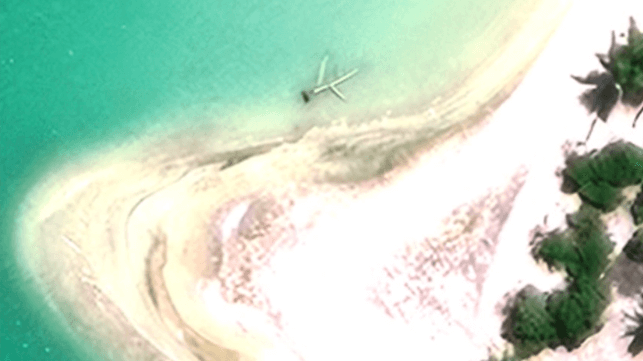Expedition Mounted to Follow New Lead on Amelia Earhart's Crash Site

Researchers at Purdue University and the Archaeological Legacy Institute (ALI) are set to head out to a remote island in the South Pacific for a new search for the wreckage of Amelia Earhart's lost airplane, which disappeared in 1938 during a circumnavigation attempt. Nine decades later, the plane and her remains are still missing, despite countless expeditions.
The Purdue expedition will examine an "anomaly" in the lagoon at Nikumaroro (Gardner Island), the locus of many theories about her final resting place. The island is a tiny coral atoll some 1,800 nautical miles southwest of Hawaii in the middle of the vast Pacific. It is 350 nautical miles south of Howland Island, Earhart's intended destination. The International Group for Historic Aircraft Recovery (TIGHAR) has investigated sites on Nikumaroro since the 1980s.
The visual anomaly that caught the eye of the Purdue team is the "Taraia Object," a distinctive shape that appears in historical videos and photos of the lagoon. As early as 1938 - the year of Earhart's disappearance - aerial photos of Nikumaroro picked up a faint, grainy blur near the shoreline just opposite the inlet. Satellite imaging picked up something similar at the same site in 2015-16. The Archaeological Legacy Institute (ALI) has had its eye on this object for years, and thinks that the protrusions are the tail, fuselage and starboard wing of Earhart's plane.
ALI has solicited enough funds to mount an expedition to thoroughly investigate the site, and it is no small matter. The team will fly to Majuro in the Marshall Islands, then sail about 1,200 nautical miles to reach Nikumaroro, departing November 4. The long journey will allow them several days' time on the island. They will examine the site with a magnetometer, then excavate with a hydraulic dredge to see if there is something beneath the sands.
“A successful identification would be the first step toward fulfilling Amelia’s original plan to return the Electra to West Lafayette after her historic flight,” said Steve Schultz, field assistant and Purdue senior vice president and general counsel. “Additional work would still be needed to accomplish that objective, but we feel we owe it to her legacy, which remains so strong at Purdue, to try to find a way to bring it home.”
The Earhart story has attracted explorers and archaeologists for years. In 1937, Earhart and her navigator Fred Noonan took off from California for an attempted round-the-world journey. Their twin-engine Lockheed Electra airplane had a range of about 4,000 miles, so they had carefully planned a series of refueling stops along the way, with assistance from the U.S. government. They took an eastbound route, and in 21 days they reached New Guinea. After repairs and refueling they departed for Howland Island, an isolated atoll where a new airstrip had been prepared and provisioned for them. They never arrived, and after a search, they were declared lost at sea.
